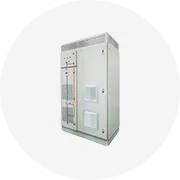Phổ biến trong ngành của bạn

Hoạt động Hydrogen nước giàu Máy phát điện điện Ionizer tinh khiết H2 Alkaline Hydrogen nước Hydrogen Máy lọc
Sẵn sàng vận chuyển
246,80 US$ - 358,00 US$
Đơn hàng tối thiểu: 1 Cái
Vận chuyển mỗi chiếc: 51,16 US$


Nhà máy trực tiếp bán hàng cấp thực phẩm Nitơ Máy phát điện khí PSA Nitơ Máy phát điện
5.999,00 US$
Đơn hàng tối thiểu: 1 Bộ


Năng lượng sạch Hydro sản xuất tùy chỉnh Hydro nhiên liệu di động máy phát điện Hydro nhà máy điện hệ thống tế bào nhiên liệu
70.000,00 US$
Đơn hàng tối thiểu: 1 Cái


Máy Phát Điện N2 Đóng Gói Thực Phẩm Máy Phát Điện Nitơ Độ Tinh Khiết Cao
5.000,00 US$ - 6.500,00 US$
Đơn hàng tối thiểu: 1 Bộ


2024 Hydro năng lượng Máy phát điện dự phòng cung cấp điện Hydro Máy phát điện tế bào nhiên liệu 10KW tế bào nhiên liệu Stack
2.400,00 US$ - 3.630,00 US$
Đơn hàng tối thiểu: 1 Cái



QLC1000 Hydrogen Khí Tạo Ra Tế Bào 1000MLPM Tinh Khiết Hydrogen Đầu Ra
Sẵn sàng vận chuyển
1.072,00 US$ - 1.340,00 US$
Đơn hàng tối thiểu: 1 Bộ
Vận chuyển mỗi chiếc: 60,00 US$

10000L Nhiên Liệu Nước Kit Hho Oxy Nâu Ngọn Lửa Máy Cắt Điện Oxyhydrogen Gas 220V Hydro Máy Phát Điện Để Bán Nồi Hơi
1.500,00 US$ - 2.900,00 US$
Đơn hàng tối thiểu: 1 Bộ

Giá rẻ di động brown khí oh200 nước khí thợ hàn máy phát điện
650,00 US$ - 700,00 US$
Đơn hàng tối thiểu: 1 Bộ

Yêu cầu khí Hydro bóng bay Hydro nước giàu hho chai Hydro Máy phát điện 300ml 99.996%
600,00 US$ - 750,00 US$
Đơn hàng tối thiểu: 1 Bộ

Công ty sản xuất Hydro xanh 0.5-500 nm3/h Máy Điện Phân Hydro pem để sản xuất và lưu trữ khí Hydro
70.000,00 US$
Đơn hàng tối thiểu: 1 Cái

99.999% H2 Hydrogen Máy phát điện điện phân tử hydrogen gas máy làm từ khí đốt tự nhiên
1.142.600,00 US$
Đơn hàng tối thiểu: 1 Bộ

Nước điện phân Hydro Máy phát điện màu xanh lá cây Hydro nhà máy hệ thống thiết bị năng lượng sản xuất khí Hydro 99.999% electrolizer
180.000,00 US$ - 550.000,00 US$
Đơn hàng tối thiểu: 1 Bộ

Máy Cầm Tay 150 Ml/phút SPE PEM Hydrogen Gas Thở H2 Hít Phải Máy Phát Điện Nước
220,00 US$ - 320,00 US$
Đơn hàng tối thiểu: 1 Bộ

Máy Hít Hydro Cầm Tay Máy Tạo Khí Hít 150Ml Máy Hít Khí Tinh Khiết 99.99% Khí H2
Sẵn sàng vận chuyển
220,00 US$ - 270,00 US$
Đơn hàng tối thiểu: 2 Đơn vị
Vận chuyển mỗi chiếc: 23,73 US$

Tốt nhất bán LN2 Máy phát điện và lưu trữ nó có một chức năng của tái liquefying các Đun sôi-off khí được tạo ra bởi tự nhiên bay hơi
2.000,00 US$
Đơn hàng tối thiểu: 1 Đơn vị

Xách tay pem Hydrogen và oxy hít thở Máy đa chức năng hydrogen gas Ống hít Máy phát điện 150ml Brown gas
240,00 US$ - 300,00 US$
Đơn hàng tối thiểu: 1 Cái
Vận chuyển mỗi chiếc: 58,12 US$

Mới Nhất Đáng Tin Cậy Và Rẻ Nhất Oxigen Tập Trung 10 Lít Với Trạm Nạp Khí
10.000,00 US$ - 12.000,00 US$
Đơn hàng tối thiểu: 1 Cái

Sản Phẩm Sức Khỏe Máy Hít Khí Hydro Pem Máy Tạo Oxy Hydro 1500 Ml Khí Nâu
Sẵn sàng vận chuyển
1.080,00 US$ - 1.580,00 US$
Đơn hàng tối thiểu: 1 Đơn vị
Vận chuyển mỗi chiếc: 0,00 US$

Màu xanh lá cây Hydrogen tại chỗ PSA Hydrogen Máy phát điện H2 gas phục hồi hệ thống H2 gas máy làm với chất lượng cao miễn phí sau khi dịch vụ
1.118.777,00 US$ - 1.118.998,00 US$
Đơn hàng tối thiểu: 1 Bộ

Oxyair pem H2 khí 2000ml 3000ml 4500ml hít máy mini gerador de hidrogenio phân tử Hydrogen inhaler xách tay
1.750,00 US$ - 1.950,00 US$
Đơn hàng tối thiểu: 1 Bộ


Màu xanh lá cây Hydrogen PSA Hydrogen Máy phát điện H2 gas Hệ thống lọc H2 gas Máy làm Ammonia với chất lượng cao miễn phí sau khi dịch vụ
1.118.777,00 US$ - 1.118.998,00 US$
Đơn hàng tối thiểu: 1 Bộ

Màu xanh lá cây Hydrogen PSA Hydrogen Máy phát điện H2 gas Hệ thống lọc H2 gas Máy làm Ammonia với chất lượng cao miễn phí sau khi dịch vụ
1.118.777,00 US$ - 1.118.998,00 US$
Đơn hàng tối thiểu: 1 Bộ

Sản Phẩm Mới Sử Dụng Máy Phát Điện Chạy Bằng Hydro
39.996,00 US$ - 39.998,00 US$
Đơn hàng tối thiểu: 1 Bộ

Độ Tinh Khiết Cao Ổn Định H2 Hydrogen 99.999% Máy Lọc Khí H2 Sản Xuất Máy Phát Điện Nhà Máy Hydrogen Máy Lọc Nước
8.000,00 US$ - 9.500,00 US$
Đơn hàng tối thiểu: 1 Bộ

Ngành công nghiệp sử dụng H2 gas sản xuất 1-1000 nm3/h Độ tinh khiết cao pem tế bào nhiên liệu Hydro Máy phát điện nước electrolyzer
50.000,00 US$ - 90.000,00 US$
Đơn hàng tối thiểu: 1 Cái

2023 Olansi Máy Tạo Oxy Hydro Mới Cho Chăm Sóc Sức Khỏe 600Ml Máy Tạo Hơi Thở H2 Khí Nâu 1000Ml
525,00 US$ - 560,00 US$
Đơn hàng tối thiểu: 5 Bộ

Máy Hít Khí Hydro Phân Tử Bán Chạy 2023 Ml Khí Nâu Xách Tay
220,00 US$ - 320,00 US$
Đơn hàng tối thiểu: 1 Cái

Máy Phát Điện 600Ml Máy Tạo Ion Hóa Nước Kiềm Máy Tạo Khí Hydro Máy Tạo Khí Nâu Để Hít Thở Hydro Mach
775,00 US$ - 1.035,00 US$
Đơn hàng tối thiểu: 1 Cái
Vận chuyển mỗi chiếc: 202,87 US$

Khí tự nhiên Hydro Máy phát điện với giá cả cạnh tranh khí tự nhiên để Hydro
1.000.000,00 US$ - 5.000.000,00 US$
Đơn hàng tối thiểu: 1 Bộ

2024 chất lượng cao mini thiết kế uống Hydrogen Máy phát điện Browns gas cho hơi thở elektrolyseur 99.99% Hydrogen Máy phát điện
620,00 US$ - 650,00 US$
Đơn hàng tối thiểu: 10 Bộ

Bán Tại Nhà Máy Máy Máy Phát Điện 99.99% H2 Độ Tinh Khiết Cao 600Ml 900Ml Khí Hydro Nâu 1000Ml
900,00 US$ - 1.500,00 US$
Đơn hàng tối thiểu: 1 Cái

SENZA Máy Sản Xuất Khí HHO Máy Phát Điện Hydro Để Làm Sạch Cacbon Để Tiết Kiệm Nhiên Liệu Cho Xe Hơi
680,00 US$ - 1.080,00 US$
Đơn hàng tối thiểu: 1 Cái
Vận chuyển mỗi chiếc: 82,59 US$

Lớn Dòng Chảy Hydrogen Hít Xách Tay 600Ml 1000Ml 2000Ml Lâm Sàng Phân Tử Tinh Khiết Hydrogen & Oxyhydrogen Nâu Khí Hít
399,00 US$ - 478,00 US$
Đơn hàng tối thiểu: 1 Đơn vị
Vận chuyển mỗi chiếc: 38,70 US$

Hydrogen cng Helium Jumbo Ống Skid container cho công nghiệp gas lưu trữ/H2 trạm/Giao thông vận tải/điện tạo ra nhà máy
250.000,00 US$ - 750.000,00 US$
Đơn hàng tối thiểu: 1 Cái

50L 200bar áp lực cao Xi lanh khí thép chai van an toàn incendio Helium Hydrogen khí y tế
49,98 US$ - 52,00 US$
Đơn hàng tối thiểu: 74 Cái
Vận chuyển mỗi chiếc: 148,59 US$

Trung tâm spa phân tử khí Hydro thu 900ml hai khí đầu ra oxy khí Hydro thiết bị thở
Sẵn sàng vận chuyển
660,00 US$ - 1.280,00 US$
Đơn hàng tối thiểu: 1 Đơn vị
Vận chuyển mỗi chiếc: 136,36 US$

Độ tinh khiết cao 99.999% hoàn toàn không có dầu Áp suất đầu vào 0,4mpa Áp suất làm việc 25mpa Máy nén khí Hydro H2
5.047,50 US$ - 10.045,00 US$
Đơn hàng tối thiểu: 1 Bộ

Uống oxy không khí molleculaire khí 1500ml nước máy phát điện 3000ml hít giá máy ống hít Hydro Máy phát điện
1.750,00 US$ - 1.950,00 US$
Đơn hàng tối thiểu: 1 Bộ
Vận chuyển mỗi chiếc: 900,00 US$
Các danh mục hàng đầu
Giới thiệu về khí hydro kg
Alibaba.com cung cấp các sản phẩm 5634 khí hydro kg. Có rất nhiều khí hydro kg lựa chọn dành cho bạn, chẳng hạn như nhà máy sản xuất, khách sạn, và trang trại. Bạn cũng có thể chọn từ nga, thái lan, và indonesia khí hydro kg. Cũng như từ plc, áp lực tàu, và động cơ khí hydro kg.Và bất kể khí hydro kg là oxy, nitơ, hay hydrogen.














